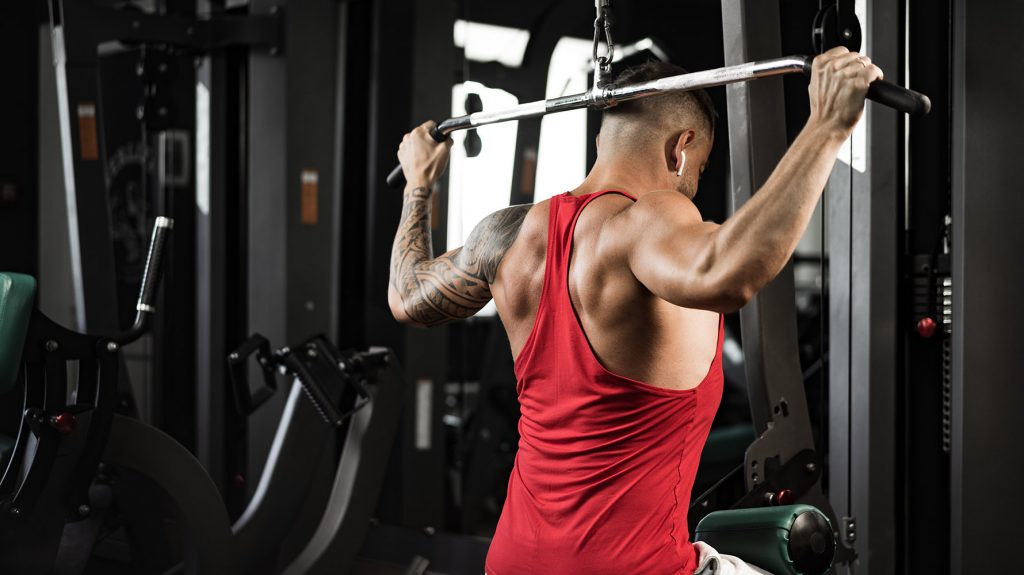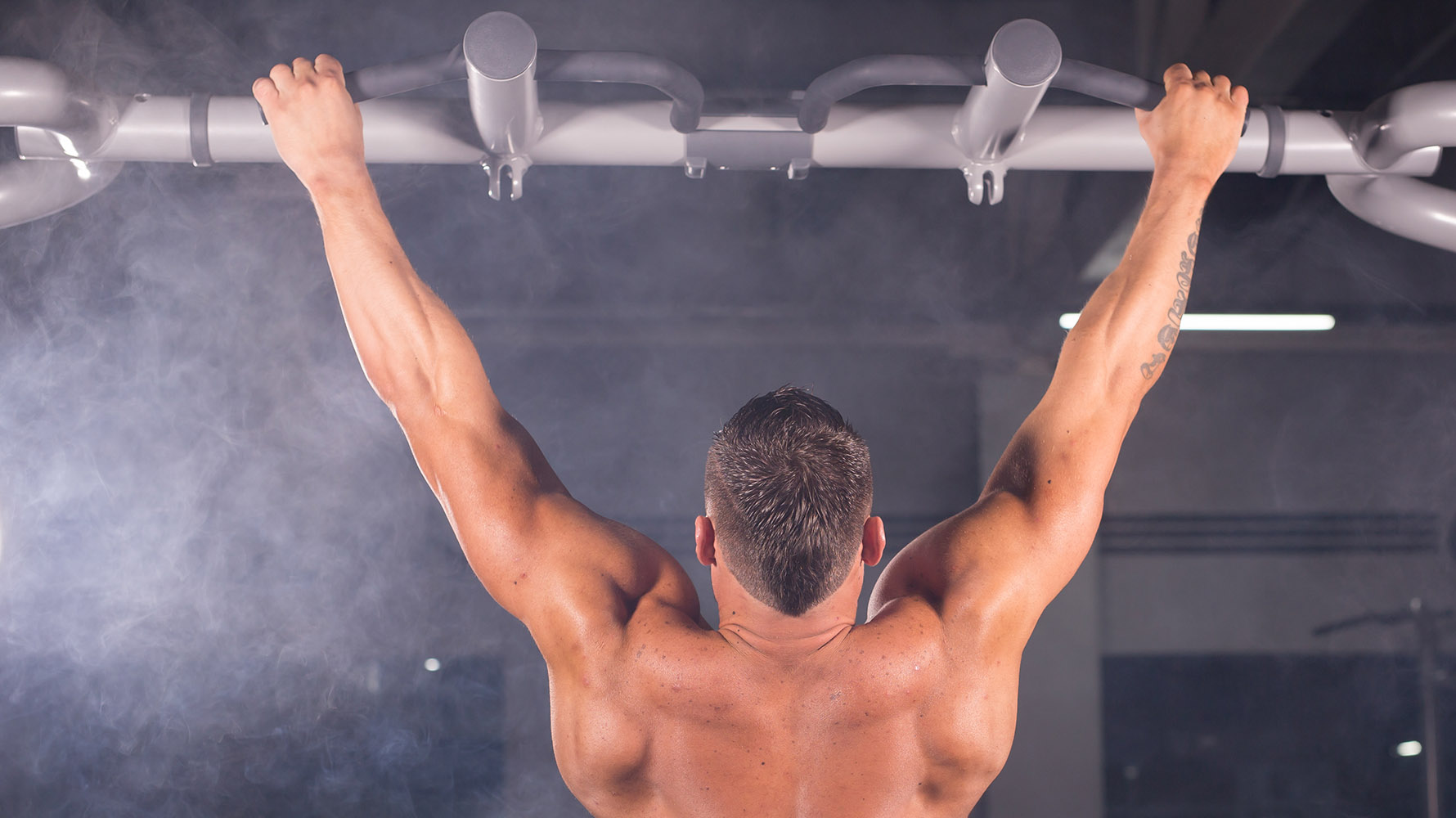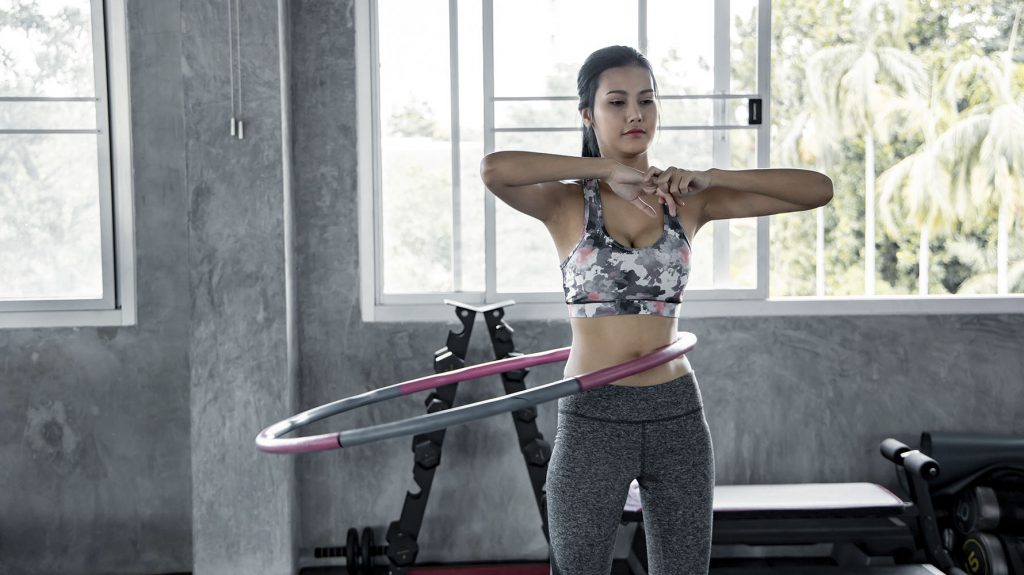This article will help give you a better understanding of the rhomboid muscles (AKA: upper back) and learn how to get a good pump. We will show you the most effective exercises and also look at the anatomy of these muscles.
The main function of the rhomboid muscles is to return the arms down from the raised position. This movement is important in kayaking, breaststroke swimming, tennis, badminton, volleyball and handball. The same function is necessary when extending the upper arm from the starting position, for example, in cross-country skiing and crawl / free style swimming and when engaging the scapula, which is important when diving and throwing the discus. These muscles also provide the optimal position for contraction in the shoulders in sports gymnastics and for extending the shoulders in cross-country skiing. In addition, these muscles stabilize the shoulder girdle, which is required for various sports.
Table of Contents
Anatomy of Rhomboid Muscles
The rhomboid muscle is located under the trapezius muscle between the shoulder blades. It has the form of a rhombic plate and begins from the spinous processes of the four upper thoracic vertebrae. The bundles go laterally and downward and are attached to the medial edge of the scapula below the axis of the scapula. The rhomboid muscles are not visible because they are located deeper, that is, closer to the center of the body compared to the trapezius muscle.
The partial elevation of the scapula, bringing it to the midline, is a function of the rhomboid muscle. Contraction of the lower part rotates the scapula with the lower angle inward.
Features of Rhomboid Muscle Workout
There are about 650 muscles in our body, but for some reason it seems that we don’t train all of them. We tend to train only the most important ones, those that form the foundation and in the process of which the whole body is physically transformed. The rhomboid muscles are just those muscles that do not need to be purposefully trained since they develop passively when performing back exercises.

What Exercises Work The Rhomboid Muscles?
Below are the best exercises that involve the rhomboid muscle.
1. Seated Cable Rows
This exercise will allow not only to build up the mass of the back muscles, but also to highlight their relief.
What Muscles Does The Seated Cable Row Work?
The following muscles work when doing Seated Cable Rows:
- rhomboid muscle;
- latissimus dorsi muscle;
- middle and lower trapezius muscle;
- posterior deltoid muscle.
Exercise Technique
Sit on the seat. Take the handle in your hands and rest your feet on the stops. The knees should be slightly bent. The torso should be vertical, and there should be a deflection in the lower back. Lean slightly forward with your lower back arched as you inhale. Pull the handle to the lower abdomen while returning the torso to an upright position on the exhalation.
Important Nuances
You should actively engage your shoulders, pulling them back and bringing your shoulder blades together as much as possible during the exercise. In this case, the elbows are kept at the sides, alongside the torso. Following this technique will ensure the most effective upper and lower back muscle work out.
2. Lat Pulldown
This exercise simulates a pull-up on the horizontal bar and allows you to train the latissimus dorsi muscle and rhomboid muscle.
What Muscles Do Lat Pulldown Work?
The following muscles work when doing Lat Pulldown:
- lower trapezius muscle;
- posterior deltoid muscle;
- rhomboid muscle;
- latissimus dorsi muscle.
Exercise Technique
Grasp the handle of the machine with a wide grip and sit on the seat. Pull the handle toward your upper chest as you exhale while slightly tilting your testogel pump torso back. Return to the starting position while inhaling.
Important Nuances
Push your chest to meet the movement of the handle while pulling. The shoulders should move back and down, and the shoulder blades should be drawn together. Following this technique very closely will ensure a great back muscle workout.
3. Wide Grip Pull Ups
This is a great exercise to train the rhomboid muscle and can typically be done in any sports ground.
What Muscles Do Wide Grip Pull Ups Work?
The following muscles work when doing Wide Grip Pull Ups:
- posterior deltoid muscle;
- rhomboid muscle;
- lower trapezius muscle;
- latissimus dorsi muscle.
Exercise Technique
Grab the crossbar with a straight over hand grip, much wider than your shoulders. Pull up by bringing your shoulder blades together, but not straining your biceps. Try to touch the crossbar with the top of your chest. Pause and hold for two seconds at the top, then return to the starting position.
Important Nuances
Sag in your back and look straight up as you pull up.
4. Bent-Over Barbell Row
This is one of the most effective exercises for training the latissimus dorsi muscle and getting the rhomboid muscle to work.
What Muscles Do Bent-Over Barbell Row Work?
The following muscles work when doing Bent-Over Barbell Row:
- trapezius muscle;
- rhomboid muscle;
- latissimus dorsi muscle;
- posterior deltoid muscle.
Exercise Technique
Take the barbell slightly wider than your shoulders with an overhand grip. Bend your legs slightly and bend your torso forward at the hips. You should be bending forward to the extent that your torso is practically parallel to the floor. The arms should be straight and the lower back should be flexed and engaged. Inhale and as you exhale, pull the barbell until it touches your lower abdomen. Then slowly return to the starting position while inhaling.
Important Nuances
Pull your elbows and shoulders back as much as possible at the top point of the movement, and bring your shoulder blades together.
5. Bent-Over Dumbbell Row
This is a great basic exercise for developing the center and upper back.
What Muscles Do Bent-Over Dumbbell Row Work?
The following muscles work when doing Bent-Over Dumbbell Row:
- latissimus dorsi muscle;
- rhomboid muscle;
- trapezius muscle;
- posterior deltoid muscle;
- biceps.
Exercise Technique
Place your left knee on the bench. Then bend down and rest your left hand on it. The torso should be almost parallel to the floor with a slight deflection in the lower back. The right foot is on the floor and you will hold a dumbbell with your right hand in a neutral grip. As you exhale, pull the dumbbell toward your lower abdomen by contracting your back muscles. Slowly lower the dumbbell to the starting position while inhaling.
Important Nuances
Try to perform the movement precisely to engage the back muscles, not the arms (IE: Mind muscle connection to focus on the muscle that you intend to train). To do this, raise your elbow high and do not pull it too far to the side. Keep your back horizontal and don’t round it. Do not rotate in your lower back. All the back muscles will be engaged to the maximum during this position and during this exercise.
Conclusion
Above you have a list of the best exercises to train the rhomboid muscles. These muscles are involved in almost every back exercise and therefore do not purposefully need to be trained but contribute to overall back development.

